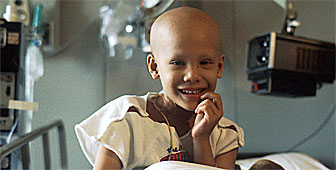Study shows Switzerland has high rate of cancer

A new study reveals that cancer is more prevalent in wealthy nations like Switzerland.
Paradoxically, cancer sufferers are more numerous in Switzerland, Italy, Germany and Sweden than in parts of eastern Europe and the former Soviet Union.
The reason, according to a new study published in the scientific journal “Annals of Oncology”, is because richer nations are able to keep sufferers alive for longer.
The study, based on data from 17 European countries, found that the disease was least prevalent in Poland, Estonia, Slovakia and Slovenia, due in part to the small number of reported cases and a high mortality rate.
The report – which documents for the first time the prevalence of cancer across Europe – suggests the high prevalence of cancer in rich nations such as Switzerland is linked to both better detection and high rates of survival.
Researchers found that countries with low infant mortality and high gross domestic income tended to have higher rates of cancer than their poorer neighbours.
“Within Europe, you have a clear opposition between what I would call advanced countries and countries which are not that advanced,” said Jean-Michel Lutz, a cancer specialist at the University Hospital in Geneva and one of the team of European researchers who carried out the study.
Late diagnosis
“It’s not only the question of the risk of getting the disease which could be higher in advanced countries… but also in less-advanced countries the diagnosis is made at a later stage, meaning that the survival will be shorter,” Lutz told swissinfo.
Breast cancer accounted for 34 per cent of female cancers and women made up 61 per cent of the total cancer prevalence, mainly because so many are being successfully treated for the disease.
“Certainly among women breast cancer is the most frequent form [of the disease],” said Lutz, “but at least the chances of survival are pretty good.”
But Lutz said the increased survival rate for many forms of cancer was grounds for optimism in the future treatment of the disease.
“If you take leukaemia, for example, the survival rate for children many years ago was very poor, but now 80 per cent of children with acute lymphatic leukaemia are cured, and this is very optimistic.”
The study was based on three million cancer patients in 17 countries diagnosed from 1970 to 1992. The prevalence rates were estimated for the end of 1992, and the cancers involved included: stomach, colon, rectum, lung, breast, cervix uteri, corpus uteri and prostate, as well as of melanoma of skin, Hodgkin’s disease, leukaemia and all malignant neoplasms.
swissinfo with agencies

In compliance with the JTI standards
More: SWI swissinfo.ch certified by the Journalism Trust Initiative
You can find an overview of ongoing debates with our journalists here. Please join us!
If you want to start a conversation about a topic raised in this article or want to report factual errors, email us at english@swissinfo.ch.